There’s a special buzz in the Latin Quarter of Paris—a mix of ancient history and modern student life that makes every street feel full of possibility.
Walking past the historic Sorbonne, wandering among Roman ruins, and stepping inside the famous Shakespeare & Co. bookstore, I felt surrounded by stories both old and new.
It’s a part of the city where the past and present really blend together.
Every corner of the Latin Quarter brings something different.
University buildings sit right next to lively cafés, and you can discover medieval landmarks just as easily as you stumble into a spot filled with students sharing ideas over coffee.
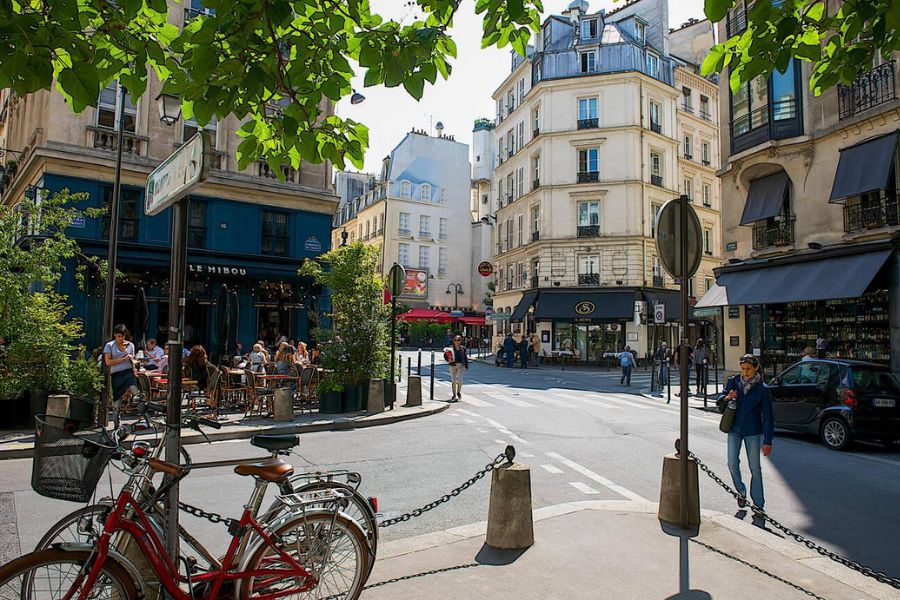
I felt inspired by the energy, honestly, and I wanted to learn more about the culture that thrives in these historic streets.
Walking the Timeless Streets of the Latin Quarter
Cobblestone walkways twist through Paris’s Latin Quarter, lined with student cafés and storied landmarks.
The air buzzes, mixing centuries of history with the modern bustle of daily life.
Exploring the 5th Arrondissement
I started my journey in the heart of the 5th arrondissement.
This district sits on the Left Bank and is known for its deep history and present-day student scene.
The Latin Quarter is famous for the Sorbonne, a university dating back to the 13th century that draws in scholars and visitors alike.
Walking near the Place de la Sorbonne, I saw students gathered with books and coffee.
Little bakeries and bookshops line the narrow streets.
A short walk took me to the ancient Roman ruins at the Arènes de Lutèce—quiet reminders of Paris’s earliest days.

Culture feels close at hand here, and both locals and travelers move comfortably through the lively, multicultural atmosphere.
Iconic Arrondissements and Landscapes
The Latin Quarter mostly covers the 5th arrondissement but touches the 6th, which has its own historic sites.
Landmark streets like Boulevard Saint-Michel pulse with activity.
The famous Shakespeare & Company bookstore sits near the Seine, its green and yellow facade welcoming readers since the 1950s.
The landscape mixes history and beauty.
I wandered past the Pantheon’s grand dome, then slipped through narrow alleys filled with street art and music.
Small squares like Place de la Contrescarpe invite you to sit and watch everyday Parisian life.
It’s easy to turn a corner and suddenly find a hidden church or a centuries-old café buzzing with locals.
Top places I explored:
| Landmark | What Makes It Special |
|---|---|
| Sorbonne University | Medieval academic hub |
| Shakespeare & Co. | Iconic English-language bookstore |
| Arènes de Lutèce | Roman amphitheater ruins |
| Pantheon | Historic mausoleum |
Navigating With the Metro
Getting around the Latin Quarter is pretty simple, even if it’s your first time.
The Paris Metro is fast, affordable, and works well for exploring on a budget.
I used the Cluny – La Sorbonne and Saint-Michel stations as my main starting points.
Metro Line 10 runs right through the area, so it’s easy to hop off and explore.
Buying a carnet of ten tickets saved me money compared to buying singles.
I noticed clear signs at stations and helpful maps posted almost everywhere.
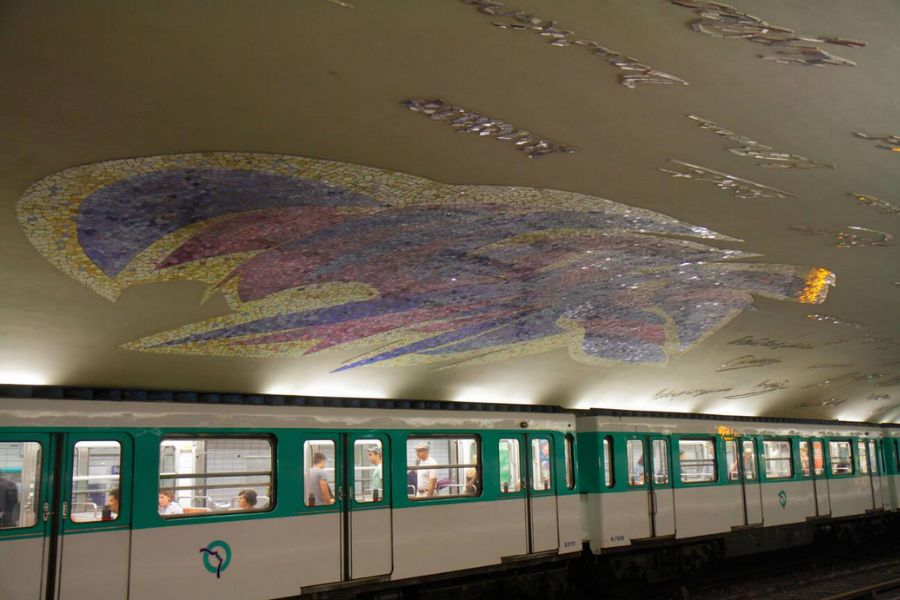
If I got lost, I just asked a shop owner or a student for directions—people here are friendly and used to travelers.
Staying close to metro stops meant I could wander far but still return to favorite spots like the Odette Cafe for a quick pastry.
The metro’s well-planned network connects the Latin Quarter to the rest of Paris, opening up new adventures every day.
Immersed in Sorbonne and the Heartbeat of Parisian Academia
Ancient facades and student crowds fill the Latin Quarter with a feeling of timeless learning.
Walking these streets, history mixes with the energy of youth, and cafes invite both study and conversation.
Discovering the Sorbonne’s Legacy
Standing before the Sorbonne, I felt the weight of centuries.
This legendary university, dating back to the 13th century, shaped the very identity of Parisian scholarship.
Its stone walls echo with stories of scientists, philosophers, and revolutionaries who once debated critical ideas here.
A walk through the Sorbonne’s courtyards reveals plaques and carvings—each hinting at a different chapter in France’s long tale of academia.
Visiting the nearby Musée de Cluny adds layers to this journey.
Among ancient manuscripts and artifacts, the scholarly roots of the area become even clearer.
Experiencing this mix of tradition and thought made me appreciate how deeply education is woven into Parisian culture.
Student Vibes and Everyday Life
The Latin Quarter buzzes with students from morning to night.
I often spotted study groups chatting on benches or along the old walls, their laughter mixing with the distant sound of buskers.
The streets felt genuinely alive, especially when classes spilled out and hundreds of students filled the cafés and bookstores.
Being surrounded by students from every background reminded me how international and diverse Paris can be.
Here, you overhear discussions in French, English, Spanish, and more.
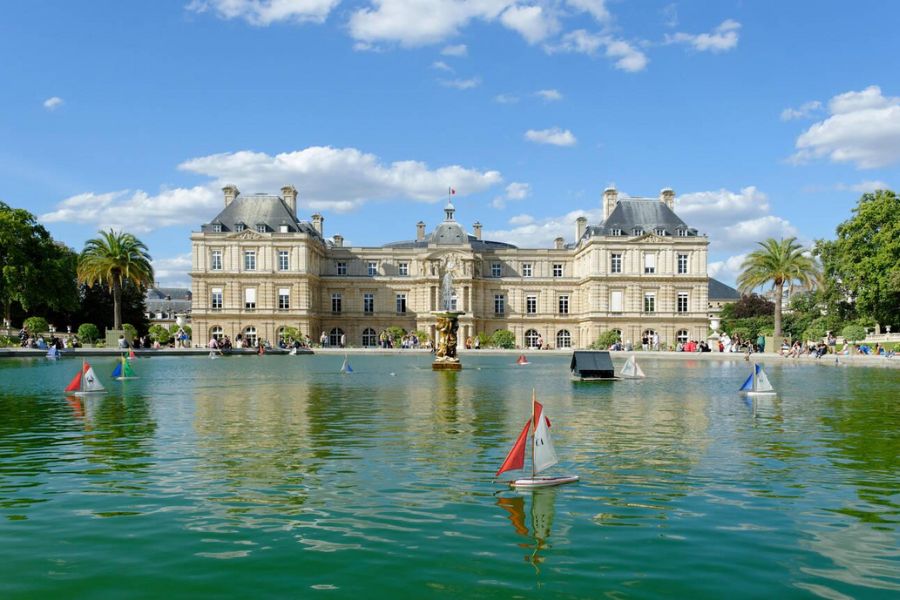
It’s easy to blend in, whether you’re grabbing a textbook from Gibert Jeune or just people-watching on Rue Saint-Jacques.
The laid-back energy here felt completely different from the rest of the city—casual, youthful, and welcoming.
Famous Cafes and Budget Eateries
Food is a big part of Latin Quarter life, and you can eat well without spending much.
Classic favorites like Le Café de la Sorbonne and the colorful Le Saint Médard sit alongside rows of crêperies and falafel stands.
These places are always packed with students looking for quick, cheap eats.
My go-to budget meal was a falafel sandwich from Maison Gaillard, often paired with an espresso from a café terrace.
Many cafeterias display their menus outside, so it’s easy to compare prices—a lifesaver if, like me, you watch your spending.
Sitting on a busy square with lunch in hand, I felt like part of the ever-changing, always-busy heart of Parisian student life.
Quick Tips Table
| Place | Type | Typical Budget | Insider Tip |
|---|---|---|---|
| Le Café de la Sorbonne | Historic Café | €3-€10 | Great for studying, free Wi-Fi |
| Maison Gaillard | Falafel Stand | €5-€8 | Vegetarian options, fast service |
| Le Saint Médard | Classic Bistro | €8-€15 | Sunny terrace, student discounts |
Tracing Ancient History: Roman Ruins and the Spirit of Rome
Walking through the Latin Quarter feels like moving between centuries.
Ancient Roman structures and stories still shape the city’s character, leaving clear links to both Roman and Greek legacies.
Unveiling the Roman Baths and Augustan Rome
The bustling streets near Cluny-La Sorbonne hide one of Paris’s oldest treasures—the Roman baths at the Musée de Cluny.
Standing in the shadow of these ruins, I could almost hear echoes from the 1st and 2nd centuries, when Rome’s influence reached far beyond Italy.
Massive stone walls and fragments of mosaics remain inside the Frigidarium, or cold room.
These ruins once formed part of public baths, a daily gathering place for conversation, exercise, and relaxation—kind of like community centers today.
The sheer scale of the architecture impressed me, hinting at the wealth and ambition of Augustan Rome.
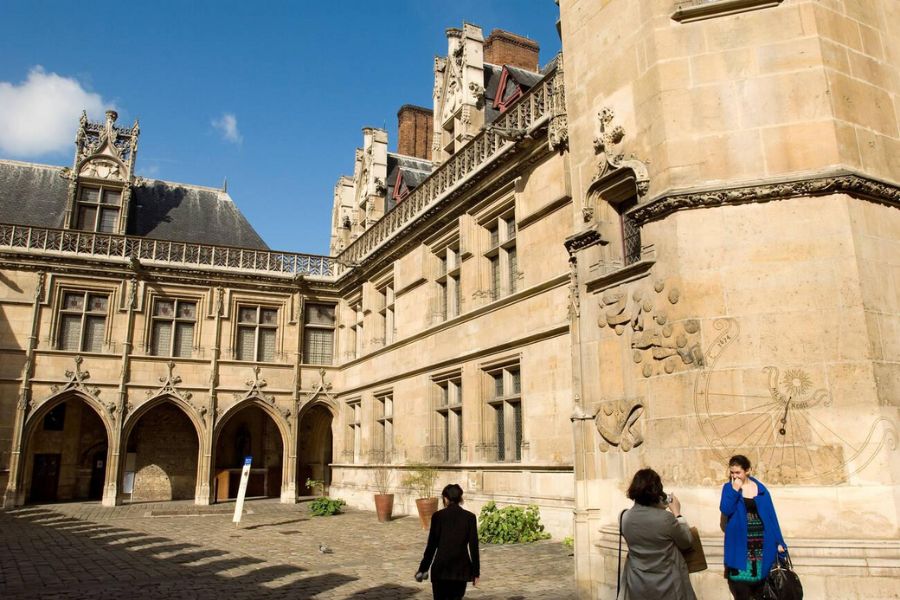
The Cluny Museum balances preservation with storytelling.
English and French signs outline the baths’ history, explaining how the Romans designed water systems and heating techniques.
The whole experience reminds you that Paris was once Lutetia, a living Roman city.
Echoes of Cicero and Greece in Paris
The intellectual tradition of the Latin Quarter always calls back to ancient Rome and Greece.
As I walked past the Sorbonne, I pictured debates in the style of Cicero, whose writings shaped European education for centuries.
Many old cafés and bookshops, like Shakespeare & Co, host long conversations on philosophy and politics.
Students reading Ovid, Virgil, or Greek classics blur the line between ancient wisdom and modern curiosity.
I noticed inscriptions and statues alluding to Athens and Rome, linking these Paris streets to the world’s oldest centers of learning.
Latin inscriptions and Greco-Roman art keep this area rooted in traditions of rhetoric and logic.
Anyone who loves classics will spot these details, showing how the Latin Quarter continues the work of scholars from over two thousand years ago.
Pantheon: Burial Place of Icons
Just a short walk away, the Pantheon stands out with its neoclassical columns and huge dome, inspired by ancient Rome’s own Pantheon.
Inside, I saw how France honors writers, scientists, and leaders—its “icons”—in a setting that blends Roman design with Parisian pride.
In the crypt below, writers like Voltaire, Rousseau, and Victor Hugo rest side by side.
The grand pillars and symmetry reminded me of both Roman temples and Greek influence, echoing the deep connection between history, architecture, and memory.

Above ground, the inscription “Aux grands hommes la patrie reconnaissante” captures the spirit of Rome: the idea that great individuals shape a nation.
My visit made it clear why this landmark is more than a tomb—it’s a testament to Western culture, built on ancient foundations.
Literary Adventures: Shakespeare & Co and Beyond
Wandering through Paris’s Latin Quarter, I kept getting drawn into the world of stories, both old and new.
Each stroll past inviting bookstores and winding streets showed me how literature shapes the city’s identity.
Echoes of Shakespeare linger, and classic plays like Hamlet and Macbeth still feel at home here.
Book Browsing at Shakespeare & Co
Stepping inside Shakespeare & Co, I found myself surrounded by shelves stacked with English-language books, both worn and new.
The scent of old paper and the low murmur of fellow readers made it feel like more than a bookstore—it was a cozy meeting place for book lovers from around the world.
I found nooks filled with classics, modern novels, and rare finds.
The staff—friendly and clearly passionate—shared stories about the store’s history and its founder, George Whitman, who opened the shop in 1951.
He once called it “a socialist utopia masquerading as a bookstore,” and honestly, I get it—readers and writers gather here, often leaving handwritten notes behind.
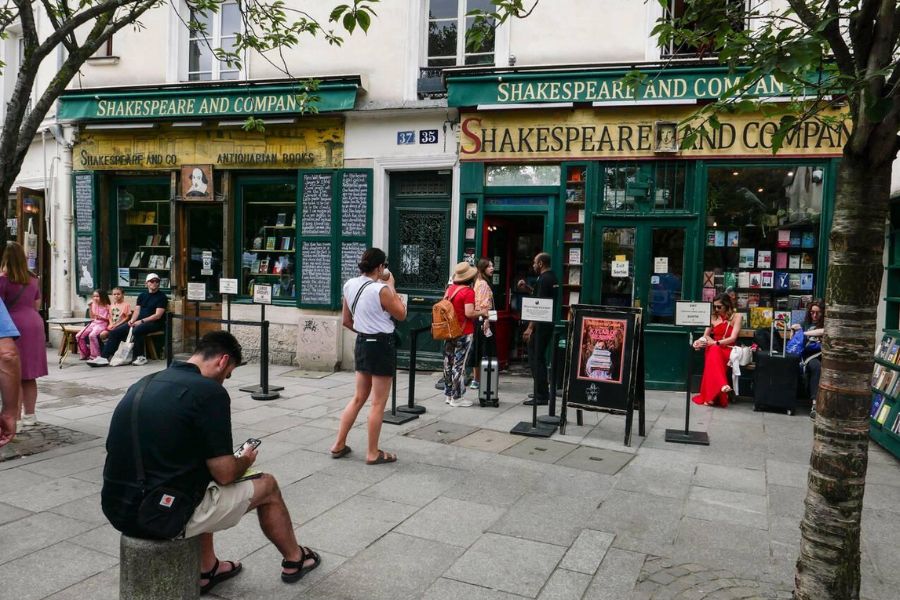
The small upstairs reading room gave me a place to pause, flipping through Cambridge University Press editions.
Even the view of Notre Dame from the windows added a bit of literary magic I’ll never forget.
Parisian Literature Legends
As I wandered further, I learned how Paris shaped famous writers.
Not just French legends, but also writers like James Joyce, Ernest Hemingway, and Gertrude Stein found inspiration in the city’s cafés and streets around the Latin Quarter.
Lists of writers who visited or lived here read like a who’s who of literature.
Their favorite spots, like Shakespeare & Co, are marked by plaques and photographs.
I spent some time jotting in my journal at a café where Hemingway once wrote, feeling connected to him and countless others.
A table comparing Writer, Favorite Spot, and Notable Work made connections clearer:
| Writer | Favorite Spot | Notable Work |
|---|---|---|
| Ernest Hemingway | Shakespeare & Co, cafés | The Sun Also Rises |
| James Joyce | Left Bank | Ulysses |
| Gertrude Stein | Latin Quarter salons | Three Lives |
Connections to Hamlet and Macbeth
Walking through the Latin Quarter, I noticed how often Shakespeare pops up in Paris, especially at Shakespeare & Co.
Along the walls, I found quotes from Hamlet and Macbeth—lines about life, fate, and ambition that still spark discussion today.
Staff explained how the shop often hosts readings and events focused on Shakespeare.
Sometimes actors perform scenes from Hamlet in English, right in the upstairs room.
Cambridge University Press editions of both plays are always available for sale or browsing, letting visitors explore originals or modern commentaries.

These connections help the store live up to its name—not just by selling books, but by keeping Shakespeare’s work alive in the city.
It’s easy to see how themes of identity, choice, and tragedy from plays like Hamlet and Macbeth fit right into the bustling, thoughtful atmosphere of the Latin Quarter.
Living the Lively Nights and Arts of the Latin Quarter
After exploring historic sites during the day, I found that the Latin Quarter truly shines after dark.
Bustling cafes, glowing lights, and a vibrant arts scene filled my evenings with energy, creativity, and discovery.
Paris Nightlife and Romance
When the sun dipped below the rooftops, the Latin Quarter really came alive. Cafés and bars along Rue Mouffetard and Boulevard Saint-Michel filled up fast with both locals and travelers.
I’d spot couples tucked at tiny outdoor tables, sharing hushed conversations under the soft street lamps. The whole scene felt almost cinematic—maybe a little cliché, but in the best way.
Jazz clubs and live music venues seemed to pop up everywhere. Le Caveau de la Huchette buzzed with swing dancing and an energetic crowd. Music drifted out onto the street, mixing with laughter and the clatter of glasses.
Honestly, it’s not hard to understand why people call Paris the City of Love.
If you want something quieter, you can wander along the Seine nearby. I watched boats drift by and listened to street performers play soft tunes.
The Latin Quarter somehow manages to offer both the excitement of a busy nightlife and little corners where you can just soak in the moment.
For Art Lovers: Hidden Gems
Art shows up everywhere in the Latin Quarter, not just in the big museums. I found small galleries and independent bookstores scattered through the neighborhood.
Shakespeare and Company pulled in literature fans, and I stumbled on art studios where local painters and sculptors displayed their work. Sometimes, the artists themselves greeted me at the door, which made the experience feel personal—kind of rare for a city famous for its highbrow art.
Street murals brightened up old walls, and I’d see artists sketching right on the bridges. On Rue de la Sorbonne, galleries showcased contemporary French art, making the scene feel fresh and approachable.
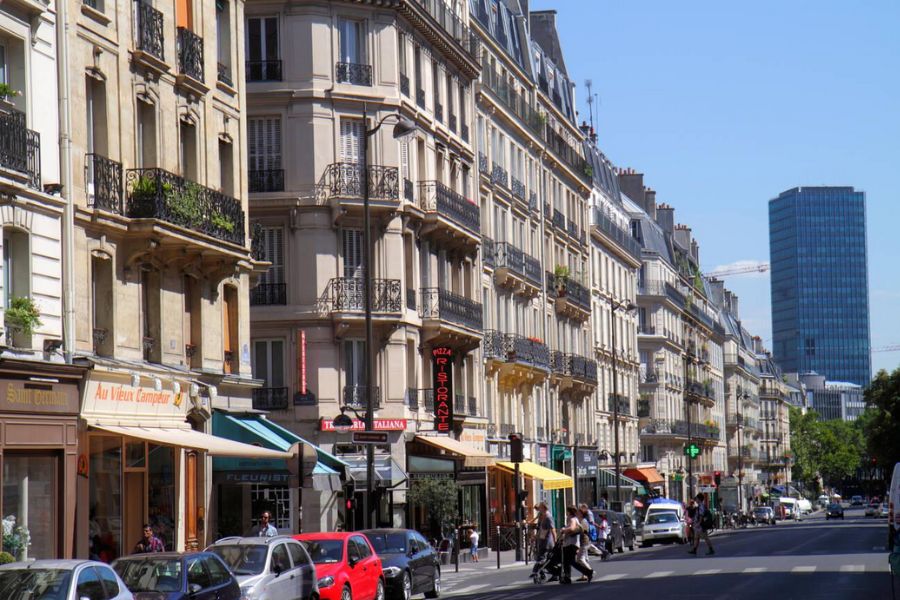
Musicians, living statues, and street performers brought creative energy to the squares. I loved watching jazz musicians play near Place Saint-Michel; it made the whole area pulse with life.
Exploring these tucked-away spots, I realized just how much art is woven into the neighborhood’s everyday rhythm.
Vibrant Street Life and Consent Culture
Evening strolls through the Latin Quarter dropped me right into the heart of Parisian street life. Vendors sold crepes and postcards, while students from nearby universities filled the air with conversations in all sorts of languages.
Groups gathered on benches or perched on the Panthéon steps, swapping stories late into the night. The whole place felt open and welcoming, but I also noticed how much people respected personal boundaries.
Public displays of affection happened often, but always with a sense of respect. In cafés, folks might chat with you, but never pushed too far.
The neighborhood struck a balance between fun and mutual respect. I felt at ease joining in the street festivities or just watching from the sidelines, knowing the lively vibe came with a sense of safety and inclusiveness.
Day Trips and Nearby Wonders: Montmartre, Bastille & More
Paris has so much more to offer beyond the Latin Quarter. Just a short ride away, I found neighborhoods packed with art, history, iconic monuments, and peaceful parks for wandering or just taking a breather.
Unforgettable Montmartre Moments
Montmartre’s winding streets and bohemian past make it stand out. I climbed the famous steps to the Basilica of Sacré-Cœur, passing painters and musicians who filled the air with a creative buzz.
The view from the top stretched out across Paris, with the Eiffel Tower peeking through the skyline. I spent time at Place du Tertre, where artists set up easels and offered quick portraits.
Cafés lined the square, tempting me with fresh pastries and coffee. Montmartre inspired artists like Picasso and Monet, and honestly, it’s easy to see why—the light and atmosphere just feel special.
Here are some Montmartre highlights I’d recommend:
- Sacré-Cœur Basilica: For sweeping views of Paris.
- Place du Tertre: Experience art in action.
- Le Lapin Agile: Historic cabaret famous for live performances.
The Bastille and French Revolution Legacy
The Bastille area buzzes with French history. Standing at Place de la Bastille, I pictured the storming of the prison in 1789 that set off the French Revolution.
The original fortress is gone, but the July Column stands tall to honor those who fought for freedom. As I wandered through the modern Bastille district, I found lively cafés and a nightlife scene that felt both historic and fresh.

The Opéra Bastille, a modern landmark, hosts operas and ballets. Every street seemed to hold a bit of revolutionary spirit mixed with today’s Parisian energy.
Key sights in the Bastille area:
| Site | Highlights |
|---|---|
| Place de la Bastille | Historic square, July Column, events |
| Opéra Bastille | Contemporary theater, cultural shows |
| Rue de la Roquette | Bustling cafés, unique Parisian shops |
Eiffel Tower and Arc de Triomphe Sights
No trip to Paris feels complete without seeing the Eiffel Tower and Arc de Triomphe. I started at Champ de Mars, where the Eiffel Tower rises up, and snapped photos from different angles as the light shifted.
Street vendors sold souvenirs, and people picnicked on the lawns nearby. Afterward, I walked to the Arc de Triomphe along the Champs-Élysées.
The arch’s carvings honor French soldiers and victories, and climbing to the top gave me another unforgettable view of Paris. I found myself appreciating both the beauty and the history packed into these landmarks.
A few tips for enjoying these sights:
- Visit early or late for fewer crowds.
- Catch the lights: The Eiffel Tower sparkles every hour after sunset.
- Consider walking from the tower to the arc for a real sightseeing experience.
Exploring the Botanical Gardens
The Jardin des Plantes—Paris’s sprawling botanical gardens—quickly became my go-to peaceful escape. I wandered between rare flowers, shady paths, and those impressive glasshouses, letting myself slow down and soak in all the beauty you somehow find right in the city.
You’ll find the Natural History Museum here, plus a small zoo tucked away inside the grounds. I loved grabbing a bench under those ancient trees, just watching daily Parisian life drift by for a while.
Noteworthy spots at Jardin des Plantes:
- Greenhouses with tropical and desert plants
- Alpine garden displaying mountain flowers
- Natural History Museum with hands-on exhibits

